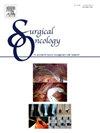Tumor necrosis drives prognosis in osteosarcoma: No difference in chemotherapy response and survival between chondroblastic and osteoblastic osteosarcoma
IF 2.4
4区 医学
Q3 ONCOLOGY
引用次数: 0
Abstract
Introduction
The percentage of tumor necrosis is a crucial prognostic factor in osteosarcoma. Many studies adopt a 90 % cutoff based on osteoblastic osteosarcoma, but these findings are generalized to all conventional subtypes, including chondroblastic osteosarcoma. We sought to answer these questions: (1) Is tumor necrosis ≥90 % associated with better overall survival (OS) and disease-free survival (DFS) in osteoblastic and chondroblastic osteosarcoma? (2) Does the osteosarcoma subtype impact tumor necrosis? (3) Does the osteosarcoma subtype in “good” responders (tumor necrosis ≥90 %) affect OS and DFS?.
Materials and methods
We conducted a retrospective study of 156 patients with osteoblastic and chondroblastic osteosarcoma treated at our institution. All patients received a standardized chemotherapy protocol and underwent surgery with the goal of achieving negative margins (R0 resection). Propensity-score matching was performed to adjust for potential confounders. Kaplan-Meier survival analysis and Cox proportional hazards modeling were performed.
Results
Patients with osteoblastic osteosarcoma and tumor necrosis ≥90 % had higher 5- and 10-year OS and DFS compared to those with necrosis <90 %. In chondroblastic osteosarcoma, a trend towards higher OS and DFS was seen in patients with tumor necrosis ≥90 %; this, however, was not significant. Chondroblastic osteosarcoma was not a risk factor for either tumor necrosis <90 % (p = 0.89) or tumor necrosis <70 % (p = 0.57). Patients with osteoblastic or chondroblastic osteosarcoma that were deemed “good” responders (tumor necrosis ≥90 %) had similar OS and DFS at the 5- and 10-year marks.
Conclusion
Conventional osteosarcoma subtype was not a risk factor for “poor” response. Survival outcomes (OS and DFS) were similar for osteoblastic and chondroblastic osteosarcoma with good response to chemotherapy.
肿瘤坏死影响骨肉瘤的预后:软骨细胞性骨肉瘤和成骨细胞性骨肉瘤的化疗反应和生存率无差异
导言肿瘤坏死的百分比是骨肉瘤预后的关键因素。许多研究以成骨细胞型骨肉瘤为基础,将肿瘤坏死率设定为90%,但这些研究结果也适用于包括软骨细胞型骨肉瘤在内的所有常规亚型。我们试图回答这些问题:(1) 肿瘤坏死率≥90%是否与成骨细胞性和软骨细胞性骨肉瘤较好的总生存期(OS)和无病生存期(DFS)相关? (2) 骨肉瘤亚型对肿瘤坏死率是否有影响?(3)"良好 "反应者(肿瘤坏死率≥90%)的骨肉瘤亚型是否影响OS和DFS? 材料与方法我们对本机构治疗的156例成骨细胞性和软骨细胞性骨肉瘤患者进行了回顾性研究。所有患者均接受了标准化的化疗方案,并以达到阴性边缘(R0切除)为目标进行了手术。为调整潜在的混杂因素,进行了倾向分数匹配。结果与肿瘤坏死≥90%的患者相比,成骨细胞型骨肉瘤患者的5年和10年OS和DFS更高。在软骨细胞性骨肉瘤中,肿瘤坏死≥90%的患者的OS和DFS有升高的趋势;但这一趋势并不显著。软骨成纤维性骨肉瘤不是肿瘤坏死90%(P = 0.89)或肿瘤坏死70%(P = 0.57)的危险因素。被视为 "良好 "反应者(肿瘤坏死率≥90%)的成骨细胞性或软骨细胞性骨肉瘤患者,其5年和10年的OS和DFS相似。对化疗反应良好的成骨细胞性骨肉瘤和软骨细胞性骨肉瘤的生存结果(OS和DFS)相似。
本文章由计算机程序翻译,如有差异,请以英文原文为准。
求助全文
约1分钟内获得全文
求助全文
来源期刊

Surgical Oncology-Oxford
医学-外科
CiteScore
4.50
自引率
0.00%
发文量
169
审稿时长
38 days
期刊介绍:
Surgical Oncology is a peer reviewed journal publishing review articles that contribute to the advancement of knowledge in surgical oncology and related fields of interest. Articles represent a spectrum of current technology in oncology research as well as those concerning clinical trials, surgical technique, methods of investigation and patient evaluation. Surgical Oncology publishes comprehensive Reviews that examine individual topics in considerable detail, in addition to editorials and commentaries which focus on selected papers. The journal also publishes special issues which explore topics of interest to surgical oncologists in great detail - outlining recent advancements and providing readers with the most up to date information.
 求助内容:
求助内容: 应助结果提醒方式:
应助结果提醒方式:


